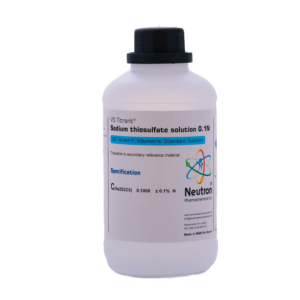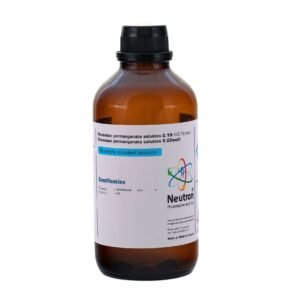Tris base
Tris Base is a high-purity, crystalline inorganic buffer compound widely used in biochemical, molecular biology, and pharmaceutical laboratories, providing reliable pH control and buffering capacity in the physiological pH range (≈ 7.0–9.0).
🏭⚗️ Production
Tris Base is produced by the controlled condensation of nitromethane with formaldehyde under basic conditions to form an intermediate, which is subsequently hydrogenated to yield 2-Amino-2-(hydroxymethyl)-1,3-propanediol (Tris). The crystalline product is then purified, dried, and packaged in airtight, moisture-protected containers to ensure chemical stability and reproducibility.
🔬 Properties
Tris Base (C₄H₁₁NO₃) is a white, odorless crystalline solid with a molar mass of 121.14 g/mol. It melts at approximately 171–172 °C and under reduced pressure boils at around 219–220 °C (10 mmHg). A 0.1 M aqueous solution has a pH of about 10.6. Tris Base is highly soluble in water (≈ 80 g per 100 mL at 20 °C), soluble in ethanol, and slightly soluble in ethyl acetate and benzene. Its pKₐ at 25 °C is approximately 8.1, making it an effective buffer in the physiologically relevant pH range of 7.0–9.0.
🧪 Applications
Tris Base is predominantly used as a buffering agent in biochemical, molecular biology, and pharmaceutical laboratories. It is a key component of standard laboratory buffers such as TRIS-HCl, TAE (Tris-acetate-EDTA), TBE (Tris-borate-EDTA), and Tris-buffered saline (TBS) for gel electrophoresis, DNA/RNA extraction, protein electrophoresis, and cell culture applications. It is also used for preparing reagents requiring stable pH control and serves as a base in certain chemical syntheses and pharmaceutical intermediate processes.
⚠️ Safety
Tris Base should be handled with care: it can cause irritation to the eyes, skin, and respiratory tract if dust or concentrated solutions are handled improperly. It should be manipulated in a well-ventilated area using appropriate personal protective equipment, including gloves, goggles, and laboratory coat. Solutions should be stored in tightly-sealed containers in a cool, dry, well-ventilated space, and kept away from strong oxidizing agents and acid-sensitive materials. Waste solutions containing Tris should be disposed of according to institutional chemical waste protocols.




